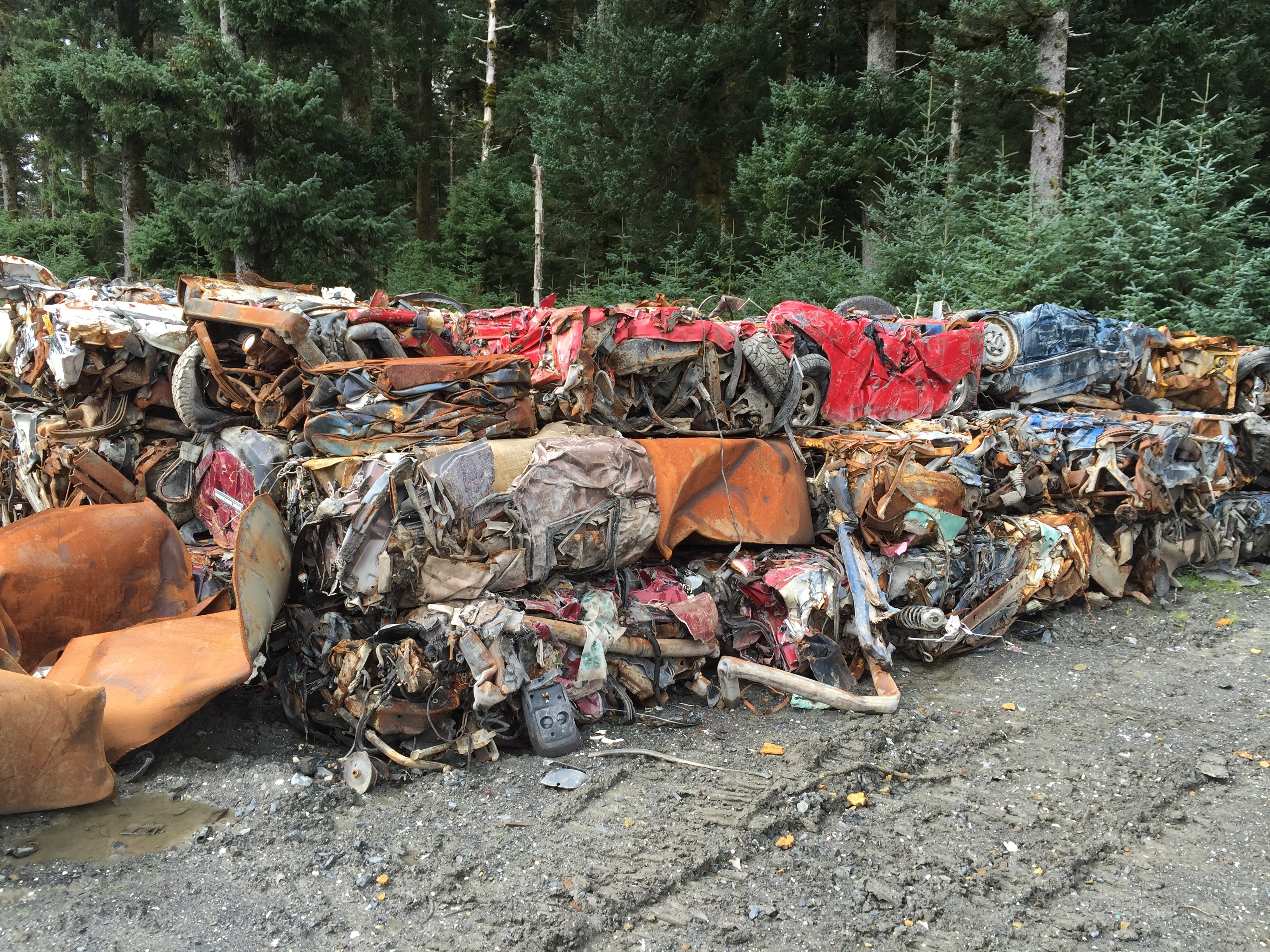
Living on an island can prove a major barrier to getting rid of large, unwanted objects like cars or fridges, especially for small communities like those in the Kodiak Archipelago.
In 2015, local partners in Kodiak began the removal of scrap metal and hazardous materials from the six island communities.
According to a Kodiak Area Native Association press release, KANA, the Kodiak Island Housing Authority and the Kodiak Island Borough partnered together on the project with funds from a Coastal Impact Assistance Program grant.
They completed the project this winter.
Before cars, trucks, refrigerators and freezers can be shipped off the island, they need to be drained of liquid. According to KANA Project Manager Tyler Kornelis, waste does have the potential to contaminate village water sources or get into the streams, but that can be avoided as long as they’re handled properly.
That’s what some village residents learned to do for the removal project.
Kornelis said they hired a company called Total Reclaim to teach locals how to drain the objects.
“To remove Freon from a refrigerator for example, it’s incredibly illegal and it’s not responsible to just release that gas into the environment, but rather you need to be trained to capture the refrigerant with the proper processes and tools,” Kornelis said.
Reilly Kosinski works for Total Reclaim’s Alaska branch and said he conducted training in Old Harbor, Ouzinkie and Port Lions, and his students walked away as certified Type One Refrigerant Technicians.
“Everyone we worked with was awesome, like really motivated folks. They worked well together and they kinda hit the ground running after I left. Seeing some of the before and after photos from KANA, it’s really impressive the amount of material that was removed.”
According to the KANA press release, local partners disposed of roughly 2,600 tons of scrap metal, 28,000 pounds of lead acid batteries, 1,700 pounds of electronic waste, 540 gallons of hazardous waste and 29 55-gallon drums of contaminated fuel waste.
Kornelis said they transported the metal and hazardous materials first by boat to Homer, where a metal firm consolidated the scraps, and then shipped them down to Seattle.
Kathryn Adkins of Port Lions said it’s amazing how a village with their population – which is roughly 200 people – can accumulate so much stuff over the years.
“In fact, even now, people are calling today wanting to know where they can take their white goods, and that means just dryers and washers, refrigerators, freezers, and that kind of thing,” Adkins said.
Adkins says it’s expensive to remove these materials and thinks they should figure out how to take advantage of backhauls from barges or other vessels to do it.
Kornelis is also thinking about the future. He said they’re unlikely to get the same funding again and they need to figure out how to get rid of the scrap metal and hazardous waste on an ongoing basis.
Kayla Deroches is a reporter at KMXT in Kodiak.




